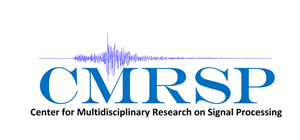
Astronomy

In this center, we are also collaborating on one of the quickest growing research areas in Astronomy: Extrasolar Planets. We aim to enrich it with the newest signal processing algorithms from the rich digital signal processing toolbox of communication engineering. Extrasolar Planets research have unique difficulties compared to other classic astronomical research since it focus in the observation of dim objects orbiting objects thousands of times brighter. In consequence, only a single photon out of 10- or 100-thousands photons carries information about the exoplanet and thus it is critical to fully understand the nature of the signal as it emerges, the nature of channels it traverses (such as our own atmosphere), as well as the systematic errors that appear during the measurement. We began the work on this discipline by targeting:
exoatmospheric characterization and
Only 7 years passed from the first detection of a bona-fide exoplanet around a main-sequence star (Mayor and Queloz, 1995) to the first detection of an extrasolar planet atmosphere (Charbonneau et al., 2002); a result that no one dare to imagine just a decade before. This opened the door to the exciting possibility of eventually detecting a life-signature around another star. Ever since the discovery of HD 209458b, the first planet whose orbital configuration serendipitously and periodically produced an eclipse to its star from our point view (Charbonneau et al., 2000; Henry et al., 2000), it was realized that these transiting planets present an advantageous opportunity to study their atmospheres. Their advantage consists in that both the transit event (planet in front of the star) as well as the occultation events (star in front of the planet) are symmetrically bracketed by a discretely different situation of unblocked photons from both the star and planet. The comparison between the transit/occultation and the bracketing configuration give us a unique opportunity to obtain the transmitted/emitted exoatmosphere’s spectrum. The telluric (Earth’s) atmosphere imposes a time-varying modulation on the exoplanetary spectral signal, both of random and systematic nature. For example, as the star steadily changes it altitude on the night sky, so it changes the amount of telluric atmosphere that the photons need to traverse. In addition, the environmental temperature or the water vapor content can vary rather abrupt. In our center we are exploring, refining and attempting new approaches for exoatmosphere characterization from state-of-the-art ground-based telescopes focusing on the removal of the telluric contribution.
The most prolific method for detecting exoplanets measures the radial velocity of the host star as it orbits around the center of mass of the system. Single planet systems with circular orbits produce single sinusoidal curves. But the most general solution for a single planet involves eccentric orbits with orbital velocities dependent on position. The challenge to detect the planetary signal on these cases relies simply on disentangling aliases from the uneven observation sampling. The Lomb-Scargle periodogram is by far the most widely used algorithm (see Pepe et al., 2011, and references therein). However, when considering systems with two or more planets, we need to consider two further effects. First, the superposition of the planetary signal makes it increasingly difficult to isolate the signal from the least massive planets. In fact, the precise orbital location or even the existence of several multi-planet systems have been challenged several times (Dawson and Fabrycky, 2010; Wisdom, 2005, e.g.) and several ambiguous systems still remain. Also, if the planets orbits are located close enough or in orbital resonances, the planet’s movement will deviate from Keplerian orbits to become non-analytic and quasi-periodical. Kepler’s mission has already found several systems where this deviation from a fixed period has even permitted to calculate the planetary masses without the need of radial velocities. By developing a new algorithm optimized for simultaneous fit to multi-planetary radial velocity data, we have already produced our first result. We tentative detected a system with a very unusual orbital resonance around the star GJ876 (Jenkins, et al 2014).
 Proyecto Anillo
Proyecto Anillo


